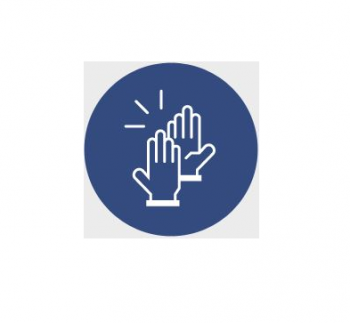When the ‘heat dome’ descended recently onto British Columbia, many emergency departments were flooded with patients suffering from hyperthermia, a rare but potentially life-threatening condition. Although hyperthermia is not seen frequently in our emergency rooms, it requires specialized, time-sensitive treatment. Fortunately, the Victoria ED Simulation initiative had run a hyperthermia scenario a year prior, and identified important gaps in care that could be remediated. These included having ready access to cooled-IV fluids, body bags that could be filled with ice and water to further cool patients, and fans for misting. On the eve of the surge in temperatures, these lessons learned were recirculated to Victoria Emergency Departments so that all staff could be as prepared as possible.
Over the next few days, patients flooded the Emergency Departments at both Victoria General and Royal Jubilee hospitals. One clinician, Dr. Jacob Wilkins, working at VGH reported that “our team functioned on the brink of crisis/Code Orange due to the sheer volume of high acuity patients”. Reflecting on the previous simulation exercise, he commented, “Fortunately, our team had run heatstroke and mass casualty simulations in the past. This undoubtedly saved lives”. Another physician remarked that the previous simulation was referenced a number of times by staff during the heat wave episode, and that the ED was stoked with supplies that they don’t normally carry. “Once again”, this clinician concluded, “a patient has benefitted from this program”.
Dr. Matt Bouchard, another clinician who worked during the heat dome, reported:
“I spent my entire shift resuscitating a steady stream of hyperthermic patients. At one point, I had three comatose patients with core temperatures above 40C, and who were also hemodynamically unable, arrive all at the same time.
Nevertheless, I felt strikingly ready for the challenge as, by chance, one of our recent Simulation Sessions in the Emergency Department was based on just such an event. When we began to hear that a heat wave was being forecast, it allowed us to review the case as a group and discuss the pearls of wisdom gleaned from it.
Our critical care colleagues were able to add to our knowledge as we shared our post-simulation discussion electronically and department-wide. Thus, when patients began arriving incessantly, there was no need to review treatments or cognitively think through work-arounds as problems arose. I could simply act. And, in doing so, I truly believe we were able to save lives that night that perhaps would have been otherwise lost”.
This is not the first time patients have received excellent care on the heels of a simulation exercise, and it further reinforces the value of regularly simulating High Acuity, Low Occurrence (HALO) events with a multidisciplinary team. As the name suggests, these happen infrequently but require precise, time-sensitive responses when they do occur. The benefits for clinician and staff morale, team building, and most importantly patient care, continue to emerge.
Thank you to Dr. Matt Carere, Dr. Donovan MacDonald, and their colleagues in the Emergency Department and other participating departments, for this life-saving initiative!
Other recent simulations run through the Victoria In Situ Simulation Program include:
- Sympathomimetic overdose with hyperthermia (ED, Nursing, RTs, Lab techs, XRAY, unit aides)
- Beta-blocker overdose + COVID AGMP practice (ED, ICU, Nursing, RT, SIM lab support)
- Precipitous delivery, post partum hemorrhage (ED, OB/GYN, LDR nursing, ER nursing, unit aides)
- COVID sudden cardiac arrest in the department (ED, ICU, Nursing, RT, Sim lab support, Unit aide)
- 2.5 year old trauma, intracranial injury, hemorrhagic shock (ED, PICU, Nursing, RT, labs, Diagnostic imaging, Unit aide)
- 27 year old pregnant female with iron overdose (ED, ICU, Nursing, RT, Unit Aide, Unit Clerks)
- 22 year old COVID positive patient with cardiomyopathy and cardiogenic shock (ED, Trauma, Nursing, RT, Unit Aide, Unit Clerks)
- 20 year old female who delivers a breech baby at the Jubilee requiring NRP (ED, OB/GYN, Nursing, Unit Aide, Unit Clerks, Midwife)
- 60 something female with facial burns and cyanide toxicity (ED, Intensivist, Nursing, RT, Unit Aides)

